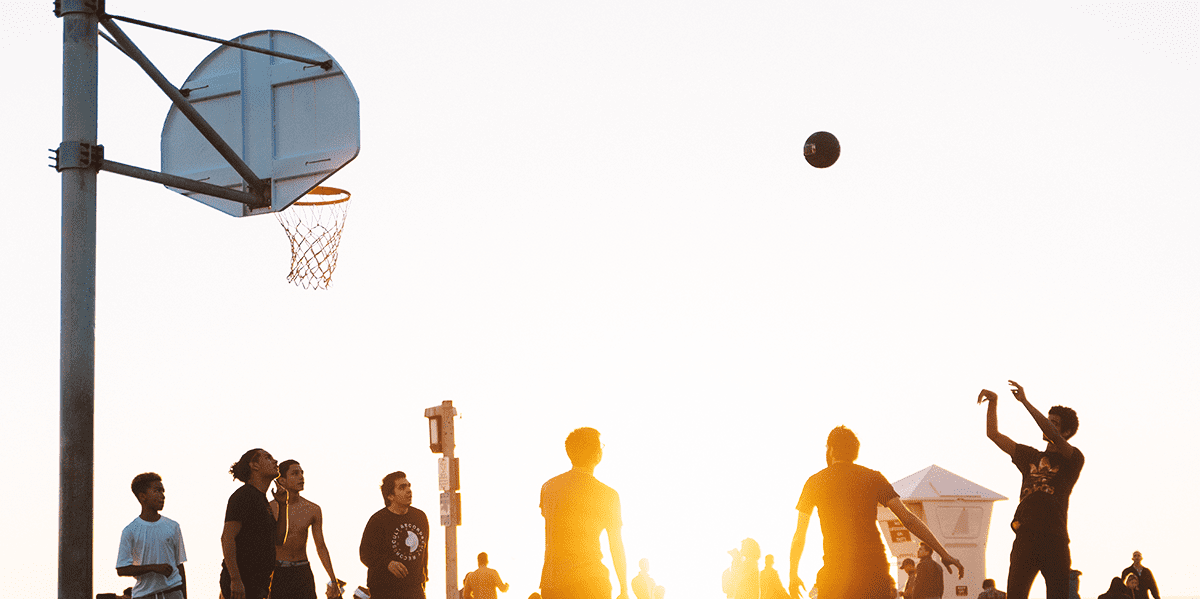The evolution of basketball dynasties

Over the next three weeks, 62 collegiate teams will compete in a “survival of the fittest”-style tournament: winners will play winners, losers will go home. That phrase—”survival of the fittest”—evokes Charles Darwin’s theory of evolution through natural selection. But does the concept of “survival of the fittest” actually apply to a sporting event? We argue that it does, but maybe not in the way you’re thinking.
Natural selection describes the changing of a species over long periods of time as a result of competition. During his travels aboard the HMS Beagle, Darwin observed a wide variety of plants and animals, some of which appeared to be related to one another. Birds on one island seemed nearly identical (but for a few small differences) to those on another. He reasoned that the species were likely descended from a common ancestor, and that their experience in different environments had led to the evolution of related, though slightly different species—each specially adapted to their island.
The madness began in 1939
This idea that evolution drives adaptation is commonplace now, but at the time it was revolutionary. According to Darwin, animals who were born with advantageous traits—meaning traits that helped them produce viable offspring—would eventually become the dominant members of a species. Put another way, animals who produced fewer viable offspring (because they didn’t survive long or because they couldn’t compete for resources) were likely to die out, giving way to other animals who could reproduce more. This, in a nutshell, is natural selection.
So how does this apply to the basketball court? To understand, we’ll have to back up and look at more than a single year of basketball. The madness began in 1939, and has happened every year since. In that time, you see many of the same teams winning over and over again. There are a number of reasons for why this is the case, but conceptually, it could be argued that the team’s rosters have evolved to attract the best talent.
- Is a football championship in your DNA? Many factors may influence athleticism, including genetics.
- Millions of years in the making: How our eyes see a fastball
In the same way that we have DNA, basketball teams have players. Some players serve the team by providing solid defense, while others bring an unparalleled three-point game. A team can’t survive with only defensive players, nor can it compete with purely offensive players. It takes a special combination of diverse players, each one with talents that complement each others’, to make a championship team. DNA works in much the same way. Over time, a species’ DNA will evolve to help it survive its given environment. What helps a fish survive in the deep ocean may not help a human on land. In the same way, a players talents may be best utilized by one team, but not another.
In this light, we can start to see how a dynasty evolves: A team is likely to win if they have a good combination of players, and good players will likely want to join (or be brought back by) a winning team. With this cycle, a team is likely to maintain a roster of all-stars year after year. This is similar to the passage of an advantageous genetic factor from one generation to the next: a DNA sequence that helps an animal produce more viable offspring is more likely to be seen in future generations.
As environments change, so too does a species’ DNA
This doesn’t mean that a dynasty grows stronger every year. A key component of natural selection is the idea that, as environments change, so too does a species’ DNA. While the rules and basic gameplay of basketball stay the same, a team’s needs are ever-changing—particularly in college, where players graduate or go pro. Teams must always be looking for a way to assemble the best roster. They must adapt to win.
The analogy here is admittedly not perfect. For instance, basketball coaches can willingly make changes to their roster. DNA doesn’t choose what happens to it; changes between generations are random, and it takes thousands of generations for a new species to form. But the analogy can be an interesting way to look at DNA—and possibly use it as inspiration to evolve your bracket year after year.